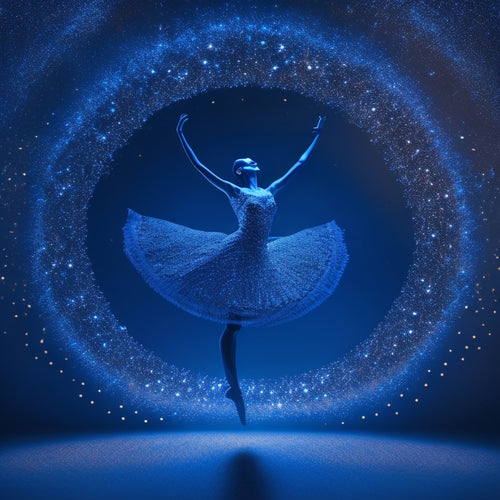
Unlocking the Secrets of Vision
Share
Revealing the secrets of vision requires a deep understanding of human perception, which is influenced by cognitive neuroscience, attention mechanisms, and emotional responses. Research suggests that 75% of sighted individuals overlook subtle details, highlighting the complexity of vision. To refine visual acuity, deliberate practice, sensory exploration, and mistake analysis are essential. Additionally, creative freedom and a distinct photographic voice can be achieved by breaking conventional norms, embracing failure, and experimenting with novel approaches. As we explore the intricacies of vision, we may uncover new avenues for creative expression and artistic innovation, revealing a deeper understanding of the visual world.
Key Takeaways
• Embracing failure and analyzing mistakes refines visual acuity and fosters innovation and resilience in photography.
• Deliberate practice and sensory exploration develop a heightened visual sense, amplifying perception and capturing intricate details.
• Unique photographic voice is shaped by perspective, composition, lighting, subject matter, tone, and personal experience, setting work apart.
• Visual illusions and cognitive biases deceive perception, highlighting the importance of understanding the complexities of human vision.
• Attention mechanisms and rule-breaking approaches can shatter traditional constraints, allowing for creative exploration and innovative techniques.
The Science of Human Perception
Researchers at the University of Illinois and Harvard have dedicated themselves to uncovering the complexities of human perception, revealing that a staggering 75% of sighted individuals are oblivious to subtle details, posing the question: what underlying mechanisms govern our visual awareness?
Through the lens of cognitive neuroscience, they delve into the complex interplay between the brain, eyes, and emotions, seeking to understand how visual illusions deceive our perception. Perception studies have shown that attention mechanisms play a pivotal role in shaping our visual awareness, with focused attention amplifying our ability to detect subtle details.
Breaking Free From Conventional Norms
In a world where creative freedom is often stifled by traditional rules, a significant proportion of photographers find themselves bound by conventional norms, yearning to break free and express their unique artistic vision.
To surpass these limitations, photographers must set out on a journey of creative exploration, experimenting with innovative techniques and perspectives. By adopting rule-breaking approaches, they can shatter the constraints of traditional photography and unleash their full artistic potential.
This demands a willingness to challenge established norms and push the boundaries of what is deemed acceptable. Through this process, photographers can develop a distinct style that sets them apart and allows them to convey their message with clarity and impact.
The Power of Embracing Failure
By acknowledging and analyzing their mistakes, photographers can harness the transformative power of failure to refine their craft, surmount creative obstacles, and ultimately, emerge as more resilient and innovative artists.
Embracing mistakes allows photographers to learn from their experiences, identify areas for improvement, and develop a growth mindset. This process of self-reflection enables learning resilience, which is essential for overcoming the inevitable setbacks that occur in the pursuit of mastering photography.
Amplifying Your Visual Acuity
Through deliberate practice and targeted training, photographers can greatly enhance their visual acuity, cultivating the ability to discern subtle details that might otherwise remain hidden from view. This refined sensitivity allows for a deeper understanding of the visual world, enabling photographers to capture images that resonate with their audience.
Visual awareness: Developing a heightened sense of visual acuity through sensory exploration, photographers can tap into the intricate relationships between light, texture, and composition.
Perception enhancement: By training their brains to recognize and interpret subtle details, photographers can amplify their perception, revealing new avenues for creative expression.
Detail recognition: Through dedicated practice, photographers can hone their ability to recognize and capture the intricate details that bring an image to life, elevating their photography to new heights.
Crafting a Unique Photographic Voice
Six key elements converge to form a photographer's distinct voice:
perspective, composition, lighting, subject matter, tone, and personal experience.
A unique photographic voice is the culmination of these components, resulting in an artistic expression that sets one's work apart.
By mastering storytelling techniques, photographers can craft a narrative that resonates with their audience.
Developing a personal style requires a deep understanding of one's creative vision, which is shaped by individual experiences and perspectives.
As photographers, we must continually challenge ourselves to refine our vision, experimenting with different approaches to storytelling and artistic expression.
Frequently Asked Questions
Can Intuition Play a Role in Capturing Exceptional Photographs?
When capturing exceptional photographs, intuition can play a significant role, as a gut feeling can inform composition and instinct can guide framing, allowing photographers to make split-second decisions that elevate their work beyond technical proficiency.
How Do Cultural Backgrounds Influence Individual Perspectives in Photography?
Cultural backgrounds profoundly shape individual perspectives in photography, as they inform personal values, beliefs, and experiences, influencing the lens through which one views and captures the world, resulting in distinctive visual narratives.
What Is the Ideal Balance Between Technical Skills and Creativity?
Achieving the ideal balance between technical skills and creativity requires harmonizing technical expertise with artistic innovation, allowing photographers to masterfully execute their vision while injecting unique perspectives and style into their work.
Can Photography Be Used as a Tool for Social and Environmental Change?
Photography can be a potent tool for social and environmental change by leveraging visual storytelling and advocacy to raise awareness, document injustices, and inspire action, ultimately driving meaningful transformations in environmental awareness and policy.
How Does Personal Experience Affect the Way We Perceive and Capture Reality?
Personal experience influences perception by modulating emotional impact and sensory perception, as the brain processes visual information through a filter of past events, emotions, and beliefs, shaping our unique reality and photographic captures.
Related Posts
-

3 Essential Marketing Tips for Dance Makeup Artists
To shine online and attract new clients, you'll need a solid marketing strategy. First, boost your online visibility ...
-

Market and Sell Digital Products as a Dance Artist
You're a dance artist with a wealth of knowledge and creativity, and now you want to turn that into digital products ...
-

Uncover the Artistry of Dot-to-Dot Dancing
Dot-to-dot dancing is an intriguing spectacle that converges logic and creativity, yielding a symphony of patterns. T...


